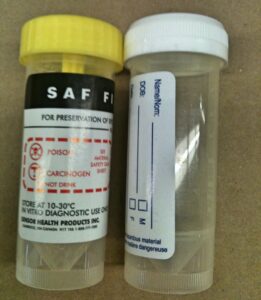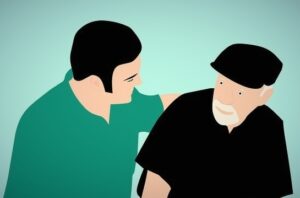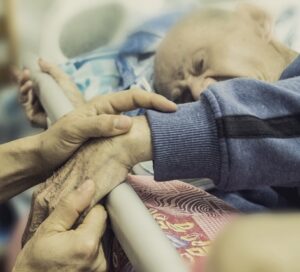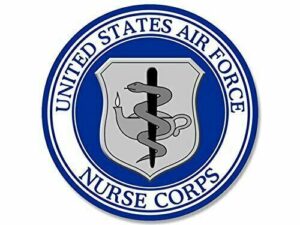
“Sir, the next time you go to the bathroom, we need a stool specimen,” I explained.
“What?” queried the elderly farmer, his leathery, work-worn face furrowed in puzzlement.
“Sir,” I tried again, “the next time you have a bowel movement, we need some in this cup.”
“What?”
“Sir (as the room intercom from the nurses’ station clicked on), shit in this cup!”
A burst of laughter at the station echoed from the intercom.
“Okay, okay,” he chuckled.
Just another lesson in “culturally appropriate” communication, something that was academic in my nursing classes at East Tennessee State University (ETSU) in Johnson City, but grittily real as a nurse tech at Carter County Hospital in Elizabethton.
At the age of 28, tired of bouncing from job to job (see previous posts), I opted to go back to school for a nursing degree. Once the transferable credits were applied from my B.A. in psychology, I could finish the program in only two and a half years. I just had one problem—I was broke. My dad, knowing I was good for it, agreed to cosign for a loan, enough to eke through the first semester, until I could land a job and settle into a work-study routine.
When I showed up at my assigned dorm room in January, 1982, the kid in the other bunk seemed a bit queasy at the sight of his scruffy-bearded, “elderly” roommate. A few days later my fresh-faced roomie departed, and the Resident Advisor informed me that in deference to my advanced age, the room was all mine.
I was hired at the hospital at the start of the summer semester, and I moved to a mattress in the sunroom of a vacated frat house for a frugal $25 a month. By the fall semester, I had paid off the loan. I found more comfortable quarters on the second floor of a two-story brick house on quiet, shady West Maple Street, a few blocks from the campus. My landlady, Delta, a petite, sweetly impish widow, was a retired teacher with a lazy tabby cat and a stoic tolerance for college student foibles.
Sixty nursing students, mostly drawn from the Tri-Cities region around Northeast Tennessee, made up the class of 1984. The majority entered the program straight out of high school, but a few, like me, were late bloomers. Kisa, a studious, dignified lady, had a master’s degree in Russian literature. A couple of the guys were ex-military.
I understood what I was getting into. Among my many jobs in Chattanooga, I had worked as an orderly and an inhalation technician at Newell Clinic Hospital, and as a psychiatric technician for two years at Valley Psychiatric Hospital. From my perspective at the bottom of the health professions’ ladder, I knew actual nursing was far from the televised version.
Only six in our class possessed Y chromosomes; I adopted a few stock answers to the inevitable Y in a field of X’s questions:
“Are you studying to be a male nurse?”
“No, I’m studying to be a female nurse.”
Or:
“Are you a male nurse?”
“Well, yes, at least the last time I checked.”
Carter County Memorial Hospital’s emergency room was the first ambulance stop for medical crises or traumas from the surrounding area. Seriously injured or ill patients, after initial stabilization, were transferred to Johnson City Medical Center (where ETSU nurses did their clinical rotations) for higher level trauma treatment and intensive care.
The nurse tech job required me to float to wherever help was needed in the hospital. This mostly entailed a lot of heavy lifting, patient transport and messy encounters with bodily fluids. I also played a minor, ringside role in emergencies. The nurses gave me opportunities to practice clinical skills; yet the soft skills, lessons learned the hard way, were gained from daily contact with patients.

One night, I got a frantic call for help controlling a combative patient “fighting” the nurses. A bearded, emaciated man flailed his arms spastically, bouncing in the bed as a couple of nurses cowered back from the guardrails. I leaned over the rails, used my body to pin him to the bed and softly said his name. He settled down and calmly answered “yes.” With a sinking feeling, I realized something was amiss in this scenario. I checked his diagnosis, Huntington’s chorea, a neurodegenerative disease that progresses to uncoordinated, involuntary body movements and dementia. In five minutes, I learned to not make snap judgments, get some history, and above all, talk to the patient.
That is think first, then talk. A sheriff’s deputy brought a hulking man, blind-drunk (“I can’t see! I can’t see!”), into the E.R. for a medical evaluation. I escorted the reeling gent back to an exam room and attempted to get his vital signs. He wasn’t having it.
“Somebody needs to see me right now, or I’m leaving!” he bellowed, jerking his arm away.
“Go ahead,” I muttered under my breath, or so I thought.
Charging out of the room, he bounced down the hall wildly lashing out and yelling, “Somebody told me to leave!”
The deputy struggled to keep the flailing man from getting away. The big fellow seemed to be winning the tussle. Feeling guilty for shooting off my mouth, I applied a high school wrestling move to take him to the floor. Eventually, our agitated inebriate calmed down and got treated. Nobody asked me if I told him to leave. I gave myself a stern lecture about professionalism.
The most heartbreaking trauma I witnessed started with a joy ride a teenager took with his friends, twin sisters. Speeding, he lost control of the car, ran off the road, and ended in a horrific crash. I could hear the wailing of the girls’ parents echoing in the halls even before I got to the trauma bay. One of the twins, dead-on-arrival, was already in the morgue. Her sister, on a gurney, was arching her neck, her legs extended with her feet pointed downward and her arms stiff at her sides with hands flexed outward—decerebrate postering—a sign of severe brain stem injury.
The driver was in an exam room with his mother at his side. Conscious and alert without visible injuries, his eyes wide and anxious, he whimpered as his mother tried to soothe him. Their sobs were subsumed by the anguished keening across the hall.
Lives altered or gone in an instant were jarring reminders of mortality. Yet, the slow-moving tragedies were in many ways harder to confront—dementia, immobility, incontinence—all the baggage that goes with aging gone awry. If I felt impatient with a confused or slowly creaking elder, I would remind myself that someday that could be me.

I’m haunted by the memory of an older man, jaundiced and confused, rushed in on a stretcher. Bedridden and neglected at home, he was incontinent and filthy: dried feces was on his hands, under his fingernails, even behind his ears. His serum potassium was elevated, a dangerous condition that can cause irregular heart rhythms. Among other treatments, he got a potassium-binding Kayexalate enema. Just as the enema expelled, he went into cardiac arrest. Despite cardiopulmonary resuscitation, he expired in a pool of excrement, battered by the team’s futile efforts to revive him. If a “good death” is something to be hoped for at the end of life, this man’s end was its antithesis. So much of what was and is troubling about our health care system and the way we approach death was packed into this situation (for more about this, see: Being Mortal, Atul Gawande).
Most of my Carter County experiences were more positive. Like the emergency delivery of a healthy baby in the front seat of a Mustang that had screeched to a halt in the hospital parking lot. “Good thing that car had bucket seats,” I told the hero doctor. The problem, almost forty years later, is the many stories of patients healed and sent home have disappeared, while the adrenaline-charged episodes won’t let go.
Student nursing back at the Johnson City Medical Center was more sedate and often tedious. Given the terrifying thought that someday I would have patients’ lives in my hands, I took my studies, crammed between classes and work, very seriously. I thrived in the hard science classes, such as anatomy, physiology and pharmacology. Otherwise, I was troubled by the contrast between the idealistic classroom depiction of nursing and my messier, complicated experiences in the county hospital.
Our clinical practicums were limited to half-day sessions. We managed, under the supervision of a nursing instructor, the care of only a single patient. Before we touched our charge, we wrote elaborate, excruciatingly detailed care plans, pages long. When we finally graduated, we were ready to take the nursing license examination, but we weren’t prepared for the frenetic pace of a full-fledged registered nurse in a busy hospital or clinic.

My family and friends, not to speak of my nursing professors, where shocked when I announced I was joining the U.S. Air Force Nurse Corps. They pointed to my irreverence for authority and noted my inexact fit to the squared-away military stereotype. One instructor’s only advice was, “You better learn to keep your mouth shut!”
I would get a direct commission as a 2nd Lieutenant, and additional clinical experience in a six-month internship before I had to take on the full responsibilities of a nurse officer. I never quite learned to keep my mouth shut, but I did learn to be strategic about when I opened it. My Air Force career would take me far from Appalachia. Yet, I never lost the perspective of that nurse tech at Carter County Hospital (since closed), and I never asked my techs to do anything I wasn’t willing to do myself.
**Featured image from Mulyadi JeCNRxGLSp4 — Unsplash, cropped
